Tempeh is a popular and delicious vegan meat alternative, made from fermented soybeans. It can be prepared in many ways including grilled, steamed, baked or pan fried. Add it to bowls and salads, or use it to make delicious tacos or stir fry!
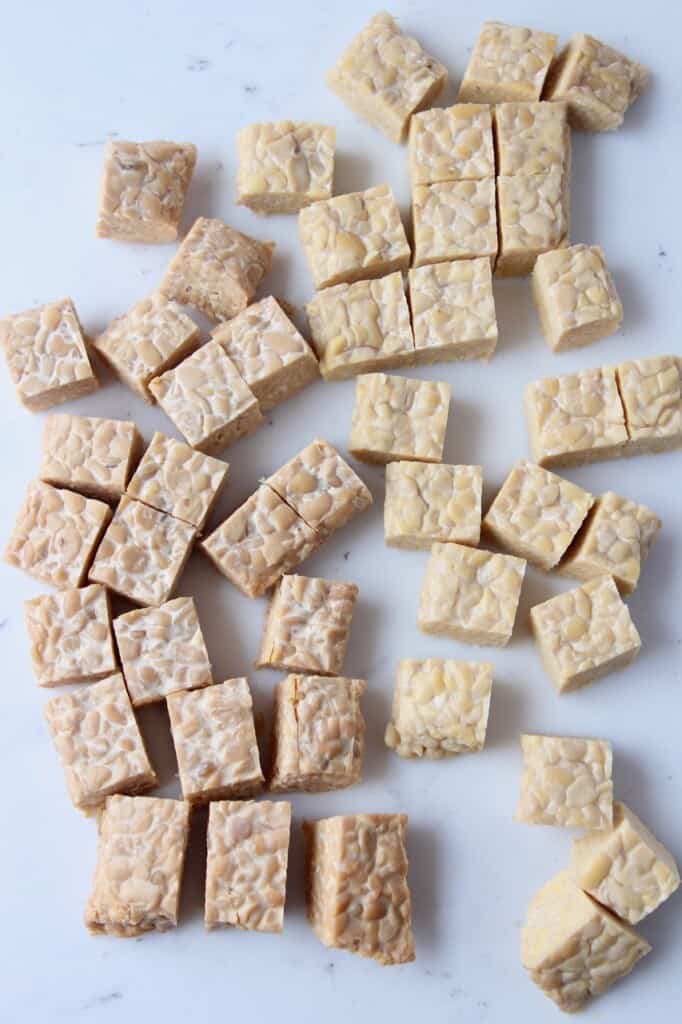
A traditional Indonesian food, tempeh is a soy based product, that's an amazing plant-based source of protein! Because of this, it's used in many vegan and vegetarian recipes as a meat substitute.
Tempeh has a chewy and firm texture, with an earthy and nutty flavor. Not a fan of tofu? Then tempeh might be just what you're looking for! It has a much firmer texture than tofu, making it more appealing for some people.
Because it takes on the flavor of whatever it's cooked with, it is often marinated before cooking. Think bbq sauce, Asian marinades, buffalo sauce, hot sauce, the possibilities really are endless!
Jump to:
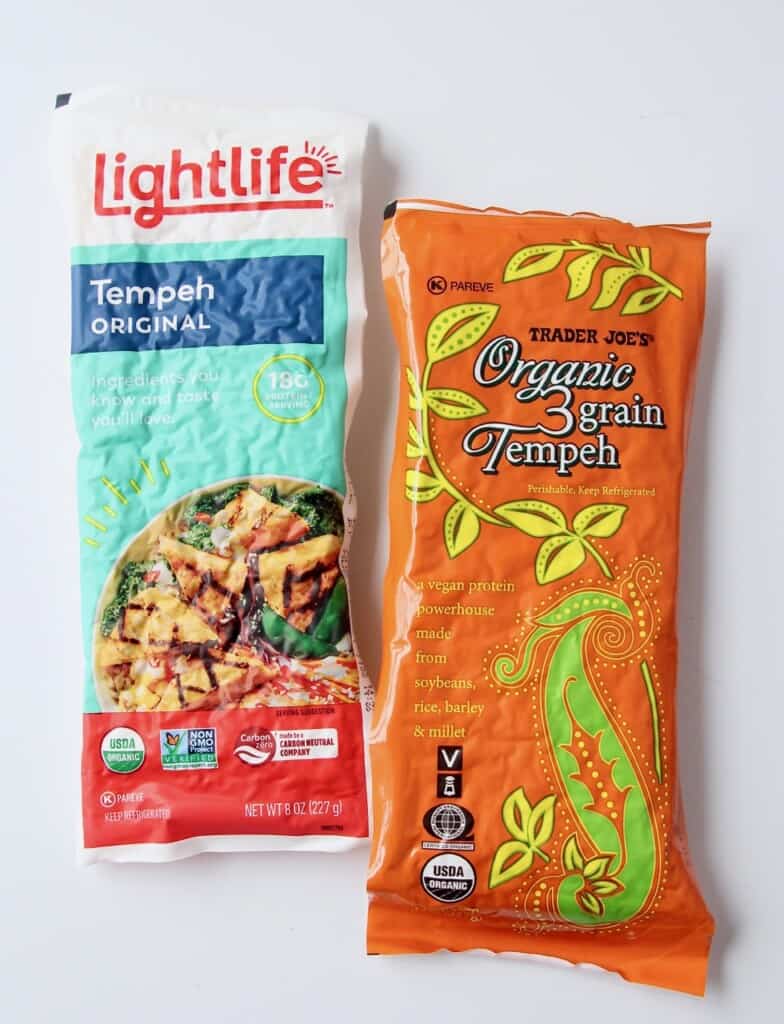
What is tempeh made of?
Tempeh is made by pressing cooked soybeans into a brick and then undergoing a fermentation process. While the main ingredient is soybeans, other beans, nuts, grains and seeds are often added as well.
Lightlife tempeh is found in most major grocery stores and their tempeh contains soybeans and brown rice. Trader Joe's has their own branded tempeh and it's made with a combination of soy beans, brown rice, barley and millet.
The nutrition will vary slightly depending on what is added to the tempeh, in addition to soybeans, but in general the taste and texture is very similar.
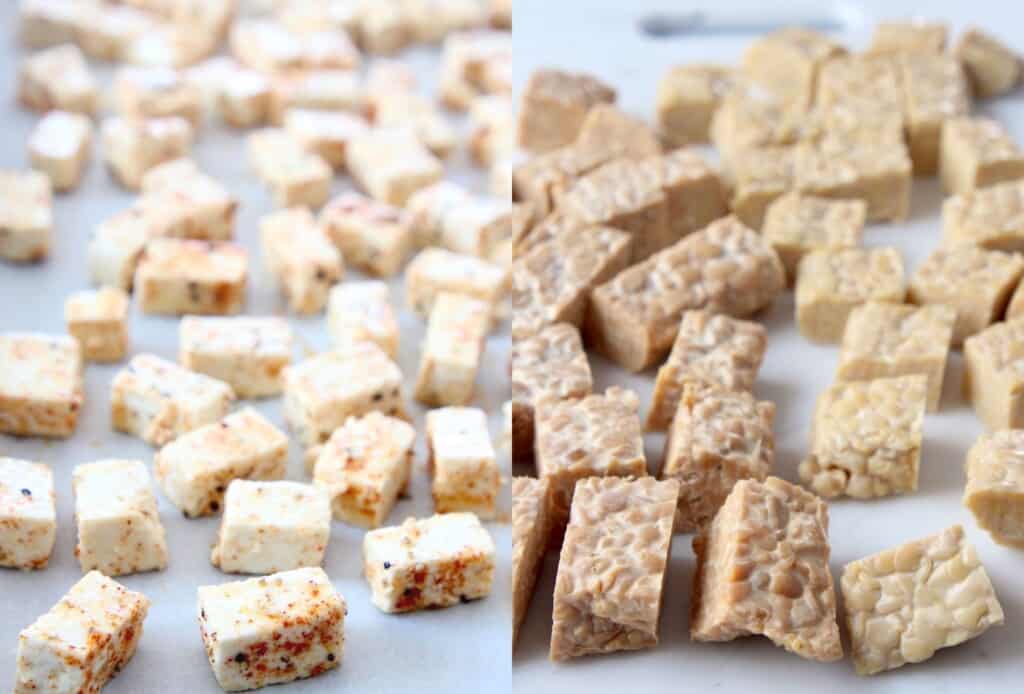
Tempeh vs tofu
While both foods are made from soy and are often used as a meat replacement, there are several differences. These differences range from how the product is made, to the taste, texture and nutrition.
While tempeh is made from fermented soybeans, tofu is made from condensed soy milk. Both are pressed into a solid form.
Tofu has a neutral flavor with a variety of textures such as silken, soft, and firm. Tempeh has more of a dense and chewy texture with an earthy and nutty taste.
Both soy products pack in a number of nutrients. Tofu is lower in calories and carbs, and is higher in calcium. While tempeh boasts good amounts of protein, fiber, iron, and potassium.
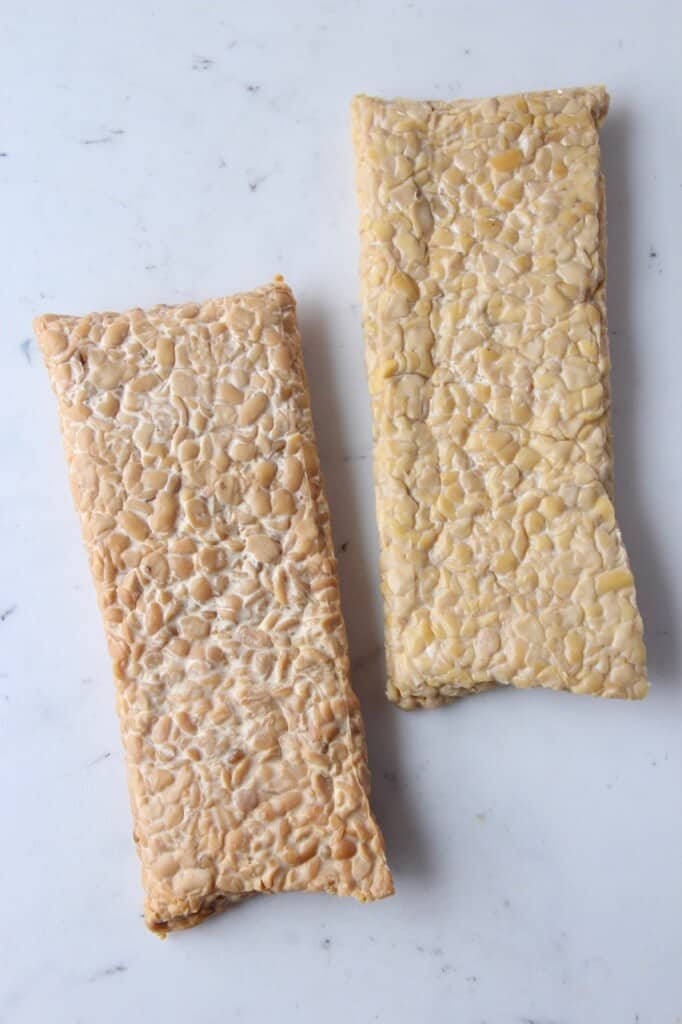
Tempeh nutrition
Tempeh is a powerhouse of plant-based protein! It's also a good source of vitamins, prebiotics and fiber. It contains manganese, magnesium, calcium, and iron.
Depending on the brand, a three ounce serving of tempeh contains approximately 160 calories, 18 grams of protein, 12 grams of carbs, and 4.5 grams of fat.
It is often gluten free, but sometimes it can contain other ingredients that may not be. For instance, Trader Joe's branded tempeh contains barley, making it not gluten free. Always make sure to check the label if you need to avoid gluten.
Where to buy it
Tempeh is becoming more available in a wide variety of stores. In addition to specialty and health food stores like Whole Foods, your local grocery store will likely carry it.
There are a few places you might find it in the store. Check the refrigerated section next to the vegan items such as tofu and soyrizo, usually next to the produce. It may also be in a refrigerated natural or health food aisle.
At most grocery stores, you can find original tempeh and seasoned or marinated strips, like buffalo or smoky bacon. Those are two of my favorites from Lightlife and are perfect for pan frying and quickly adding to bowls or salads!
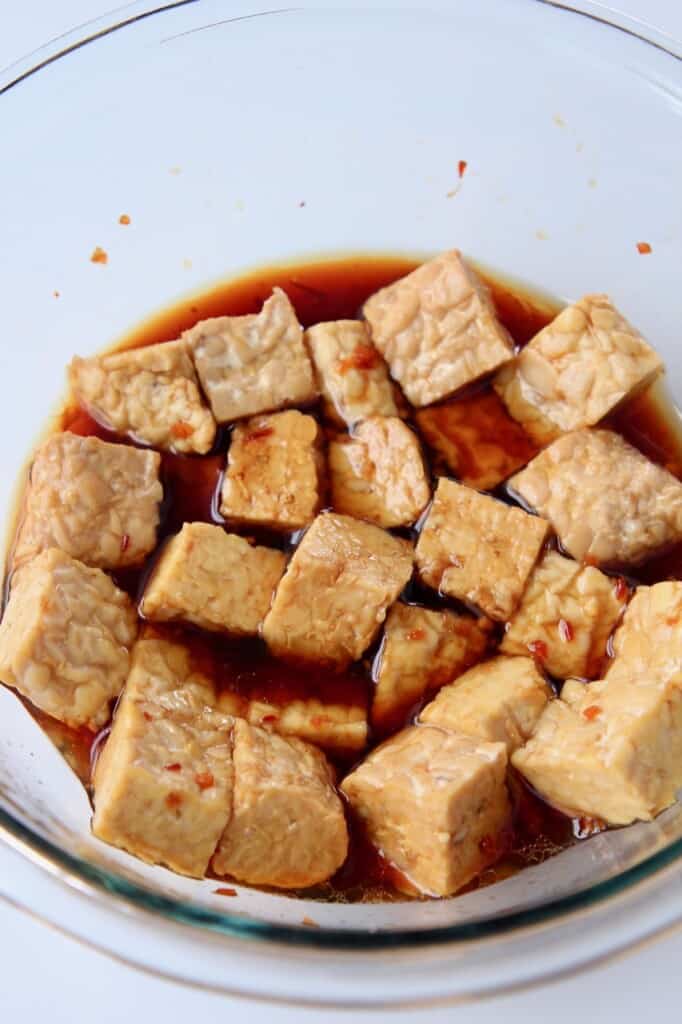
How to cook tempeh
There are many ways tempeh can be prepared. In addition to crumbling it and adding to recipes like soups and stews, it can be marinated and cooked using several different methods. Try it steamed, pan fried, baked, or grilled.
- Steamed method: Place cubed tempeh in a steamer basket, inside of a pot with a few inches of boiling water. Cover the pot and reduce the heat to low. Steam covered for 10 minutes.
- Pan fried method: Place a large non-stick skillet on the stove over high heat. If the tempeh has already been marinated, you do not need to add oil to the pan. If it has not been marinated, I recommend adding 1 tablespoon of oil to the pan. Add tempeh strips or cubes to the skillet and cook for 4-5 minutes per side, or until golden brown.
- Baked method: Place cubes of tempeh on a parchment lined baking sheet and bake in a 425°F oven for 10 minutes, flip and bake for an additional 5-7 minutes.
- Grilled method: Heat a grill to high heat. Cut a whole piece of tempeh into large triangular pieces. Add them to the hot grill and cook for 5 minutes on each side.
After trying each method myself, I recommend pan frying the tempeh in a skillet. It's the quickest method and leaves you with the most crispy tempeh!
You can also crumble it up and use it as a substitute for ground beef or other types of ground meat. I like to use this method for making tacos or "meat" sauce for spaghetti.
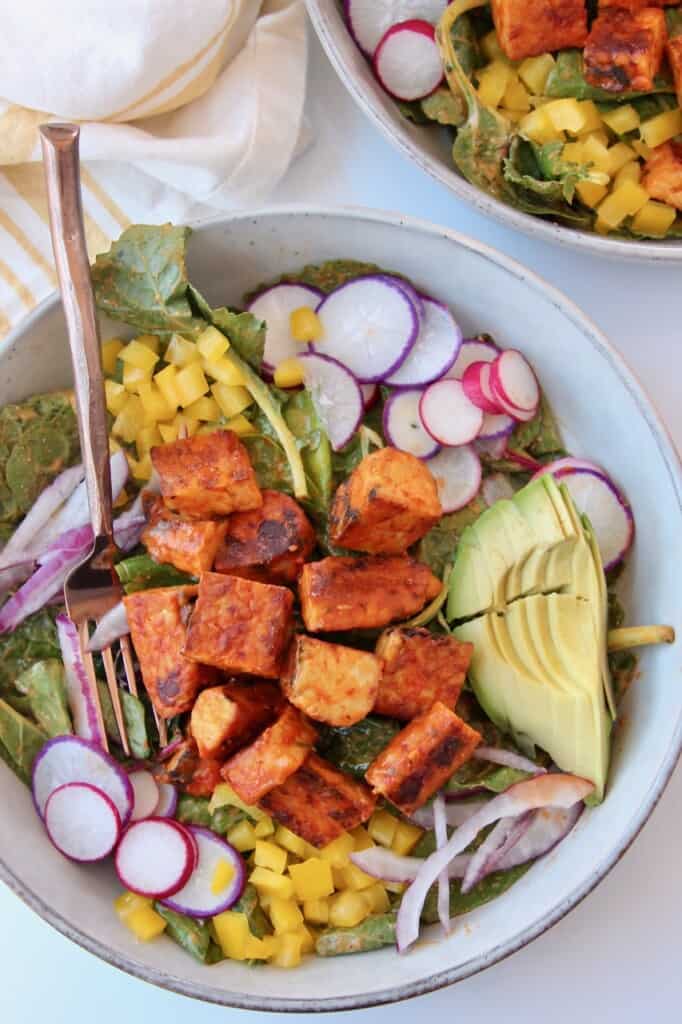
Tempeh recipes
Start using this healthy food in all your favorite dishes as a meat substitute. Try it in this Buffalo Tempeh Salad or as a replacement for chicken or shrimp in these bowl recipes:
- Harissa Chicken Bowl
- Shrimp Taco Bowl
- Chicken Shawarma Bowl
- Whole30 Grilled BBQ Chicken Bowl
- Mediterranean Shrimp and Rice Bowl
- Tex Mex Egg Roll In A Bowl
Or try some of our favorite vegan tempeh recipes from around the web!
- Terikai Tempeh
- Tempeh Tacos
- Vegan Tempeh Egg Roll Bowls
- Healthy Greek Gyros with Tempeh
- Balsamic Marinated Tempeh
Learn about more of our favorite ingredients
Check out this ingredient guide, packed full of information about all of our favorite lesser-known ingredients, like tamari, harissa and shirataki noodles!





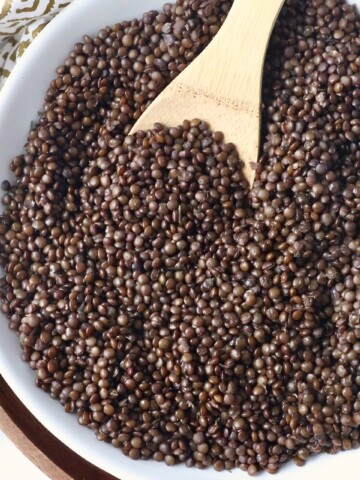
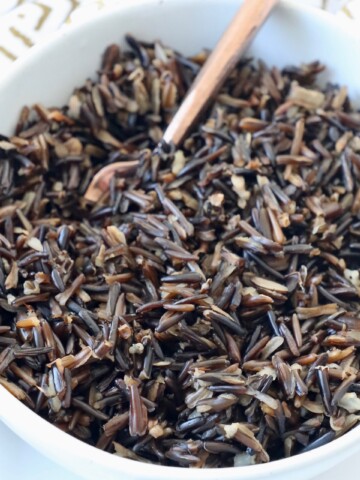
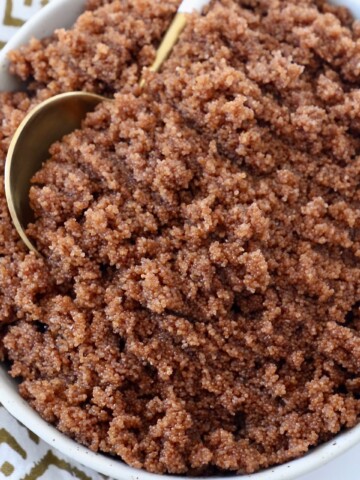
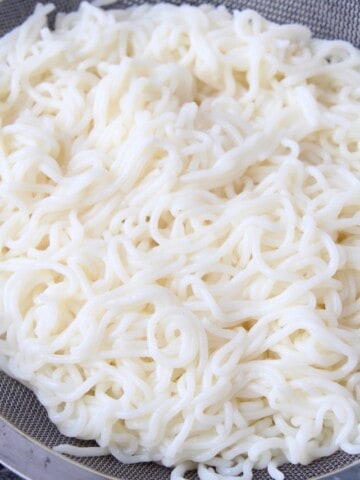
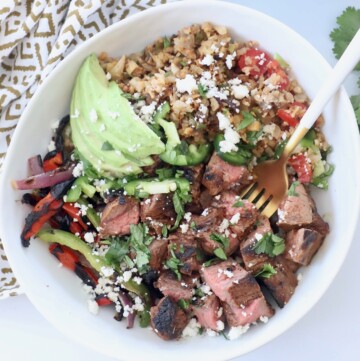
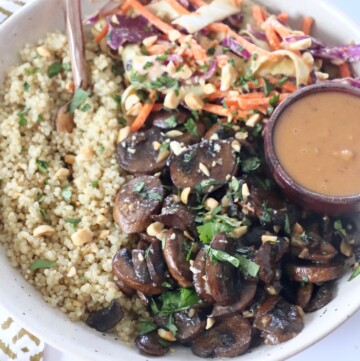
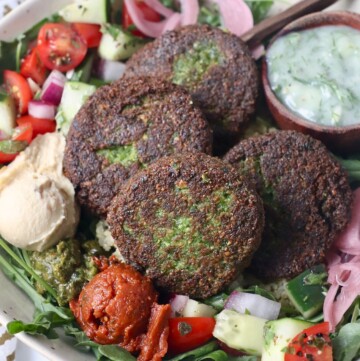
Comment Here!